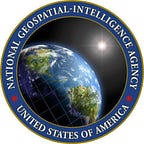National Geospatial-Intelligence Agency Director Robert Cardillo addressed the crowd at the 28th International Cartographic Conference in Washington, D.C., July 5. He discussed the evolution of mapping in the U.S. Here are five map facts Cardillo mentioned during the conference.
1. Who does NGA consider its first employee?
George Washington was a noted cartographer and surveyor — he learned to be a surveyor in the wilderness of Virginia in 1747 before the age of 16.
“As a military officer, he put these skills to good use in the field. George Washington drew a map to illustrate his journey of 1753–54. It shows the river system around Pittsburgh and traces his travels to negotiate with the French in the early days of the French and Indian War.”
2. Who is considered the father of military mapping in the United States?
Robert Erskine impressed General George Washington so much with his engineering experience and prodigious knowledge that he appointed Erskine to the newly formed post of Geographer and Surveyor General of the Continental Army.
“Robert Erskine produced more than 275 maps for the Continental army. A copy of this Erskine map hangs outside my office at NGA. It’s a map of the Hudson highlands — it includes what is now West Point, and slightly south of there, the location of the Revolutionary War “Battle of Stony Point” where the greatest military on the planet was defeated by a militia — empowered by cartography.”
3. Which NGA mission is one of the agency’s oldest?
NGA’s Safety of Navigation mission is one of its oldest and one of the most critical missions. Public inquiries in Britain and the United States following the Titanic disaster April 15, 1912 and the resulting international efforts to track Arctic ice in shipping lanes led to major improvements in maritime safety. One of the most important legacies was the establishment of the International Convention for the Safety of Life at Sea in 1914, which still governs maritime safety today.
“NGA’s Maritime Safety Office collects, evaluates and compiles worldwide marine navigation products and databases. This office is responsible for maritime safety and hydrographic activities including support to the worldwide portfolio of NGA and National Oceanic and Atmospheric Administration standard nautical charts and hardcopy and digital publications.”
4. What was a key milestone for mapping during World War I?
During World War I, the U.S. saw a new period of growth in mapping. Aerial photography began to make its appearance. Famed American photographer Edward Steichen was a leader in these efforts. Aerial photographs not only revealed troop movements and enhanced cartographic services, but also offered more reliable battle-damage assessments based upon images captured before and after bombardment from the air or by artillery. Steichen and his staff helped military leaders standardize many other techniques, including the use of multiple images to produce three-dimensional effects, enhancing detection further.
“While aerial photographs provided great detail, drawn interpretations often made analysis easier. To create a map, the photographic interpreter placed a sheet of semitransparent paper over a selected photo. They traced over the features — man-made and natural — that were pertinent to their mission. The drawing and print were then re-photographed together.”
